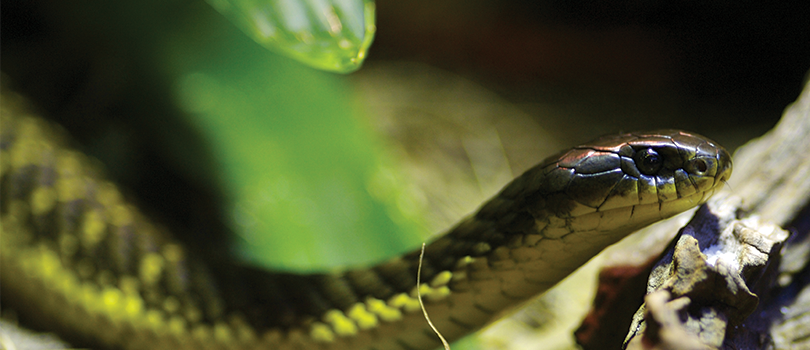Total Items: 0
Sub Total: $0.00
02.12.2014

According to the Australian Venom Research Unit, 19 of the world’s 23 deadliest snakes are found in Australia. The good news is that death by snakebite is pretty rare in this country (less than half a dozen deaths per year), thanks to better antivenins and improved first aid techniques. The Eastern Brown Snake is the worst culprit, accounting for over half the fatal bites in Australia.
Far too often, snakebites occur when people are trying to harass, kill or pick up snakes, so the first safety rule is simple: leave these reptiles in peace. Snakes are protected native wildlife in Australia and should not be harmed.
A sturdy pair of hiking boots and long trousers (or gaiters) will offer the best protection for your lower legs. Stick to marked trails so it’s easier to spot resting snakes; when you bush-bash off-track, they’re much harder to see.
Be careful when stepping over fallen logs – there might be a snake on the other side. Snakes can be under rocks, in trees, swimming in creeks or hiding in shrubbery. Be alert to your surroundings, and avoid putting your hands near likely snake hiding places. Snakes can be extremely well camouflaged – a death adder, for example, is hard to distinguish from the dry leaf litter surrounding it.
Snakes are startled by sudden movement, so if you are in a position to move away from the snake, do so slowly and smoothly. In many cases, if you remain motionless, the snake will move away of its own accord. Snakebite is a defensive reaction, so give the snake plenty of room to make an escape.
The old ‘cut, suck and tourniquet’ treatment is a thing of the past. The modern method is to apply a firm pressure bandage to the bite site and along as much of the limb as possible. Always carry a 10cm wide crepe roller bandage in your first aid kit for this purpose. Once the bite site is covered, continue wrapping the bandage up the length of the limb in a spiral motion with firm, even pressure, and back down the limb if the bandage is long enough. Use roughly the same pressure as if you were wrapping a sprained ankle. The bandage must not be so firm that it cuts off circulation to the limb.
The next step is to immobilise the affected limb with a splint. Splint legs into a straight position. Splint forearms up to the elbow and support with a sling. Victims should stay as still and calm as possible to slow the spread of the venom. If applied promptly and correctly, the pressure and immobilisation method is very effective.
You may not be able to totally prevent a snakebite from happening, but making sure you have the correct gear to deal with the situation is incredibly important. Although gaiters may help safeguard against snakebite, always make sure that you have a quality first aid kit on hand.